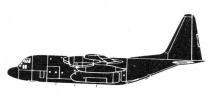Incident Overview

Description
The C-17 touched down at Bagram Air Base with its landing gear retracted. The aircraft suffered significant damage to its belly and a small fire broke out as a result of the mishap. There were no reported injuries. The airplane operated on a support flight from Al Udeid Air Base, Qatar. The copilot was pilot flying from cruise until 28 seconds prior to landing under direction of the commander, a certified flight instructor. The commander took over control on short final to improve landing position. He landed the plane gear-up approximately 2800 feet pas the beginning of the runway. The airplane slid 4528 feet before coming to rest. The accident investigation board president found clear and convincing evidence that Mishap Pilot (MP)’s and Mishap Copilot 1 (MCP1)’s failure to lower the landing gear and confirm proper aircraft landing configuration in accordance with the “Before Landing Checklist” caused the mishap. The accident investigation board president also found evidence that aircrew distractions, task saturation, reduced cockpit visual cues, failure to cross-monitor each other’s performance, Tower’s failure to transmit a required reminder and the Mishap Crew (MC)’s inadvertent disabling of the Ground Proximity Warning System alerts were substantially constributing factors.
Primary Cause
Failure to properly lower the landing gear and confirm proper aircraft landing configuration, resulting in a lack of proper aircraft landing configuration.Failure to properly lower the landing gear and confirm proper aircraft landing configuration, resulting in a lack of proper aircraft landing configuration.Share on:




